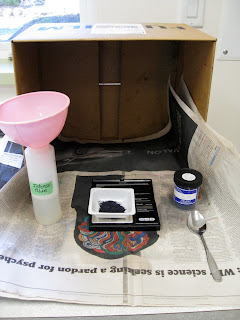Ron and Nordic Fencing team leader, Mat, plan the location of the deer fence along the south boundary.
Nathan is digging trenches for irrigation pipes.
The main pipe will be located under the path going around the pergola and arbor. If there is ever a problem with the pipe it can be dug up without disturbing any garden beds.
Meanwhile, I am collecting leaf skeletons from under the tulip trees.
The damp conditions are ideal for the soft parts of the leaf to rot away leaving the leaf skeleton in tact.
After washing and laying the leaves out to dry...
...I am sewing them onto an embroidered afternoon tea cloth that spent a year or so outside wrapped around a tree trunk. I have been adding leaves to this cloth for the past couple of years. The repair of the decayed cloth with darned leaves speaks of how leaves fall to nourish and repair the soil, the skin of the earth. I will keep adding to the cloth for another season or so to demonstrate how soil building is a long term continual process.
The work is called, 'Earth Repair.'
The hyacinths are blooming in the studio bed. There is such a lovely smell as I come and go from the Green Shed.
Now that the winter rains have eased we can continue with the Backyard Project tasks






















































